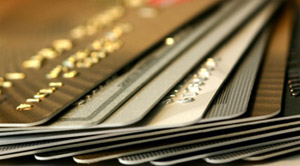How to Rebuild Your Credit in Canada
You will undeniably agree that it makes no sense to go straight into the local bar and drink to the occasion of having completed an alcoholic rehabilitation program successfully. By the same token, it makes little sense to go begging your previous creditors for a loan as soon as your bankruptcy period is over.
Instead, you have to develop a money-saving mindset, which is the key to rebuilding your credit score after bankruptcy. The simplest and most efficient way to start saving money is to keep practicing the habits that you developed during the bankruptcy period. This time, however, instead of making a monthly payment to your trustee, you have to put the same amount of money in your savings account. Donít tell yourself you cannot do it. You certainly can, since youíve been doing it for the past five or six months already. Just keep your spending belt tight and everythingís going to be in order. Alternatively, you can ask your accountant to automatically deduct the sum from your pay-cheque and transfer it to your savings account.
Think about it that way: if you are able to save just two hundred dollars per month, that
 makes a good twenty-four hundred dollars for the year. No, you canít book that cruise around the Bahamas; so, get your hands off the mouse right now! A better idea for your hard-saved twenty-four hundred dollars is to apply for a secured credit card. You have a credit score to rebuild, remember? Donít forget that you should watch for hidden charges and yearly maintenance fees when shopping around for a prepaid credit card.
makes a good twenty-four hundred dollars for the year. No, you canít book that cruise around the Bahamas; so, get your hands off the mouse right now! A better idea for your hard-saved twenty-four hundred dollars is to apply for a secured credit card. You have a credit score to rebuild, remember? Donít forget that you should watch for hidden charges and yearly maintenance fees when shopping around for a prepaid credit card.Getting a secured credit card is the first step towards rebuilding your credit score, and the second one is opening a Registered Retirement Savings Plan account, where you can put your monthly savings. This being done, you have to apply for an RRSP loan, but not bigger than the amount of money you have deposited in your account. The good thing about RRSPs is that you receive tax refund in the amount of about five hundred dollars for each two thousand dollars you contributed to your RRSP account. Thus, you can make use of the tax refund to repay part of your registered retirement savings plan loan.
Keep saving money and soon you will accumulate a decent down payment which you can use to buy a car or even a house. RRSPs and secured credit cards are great credit-rebuilding vehicles that will help you build a decent credit history and start you financial life anew.